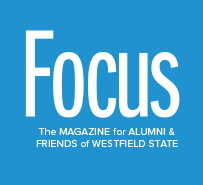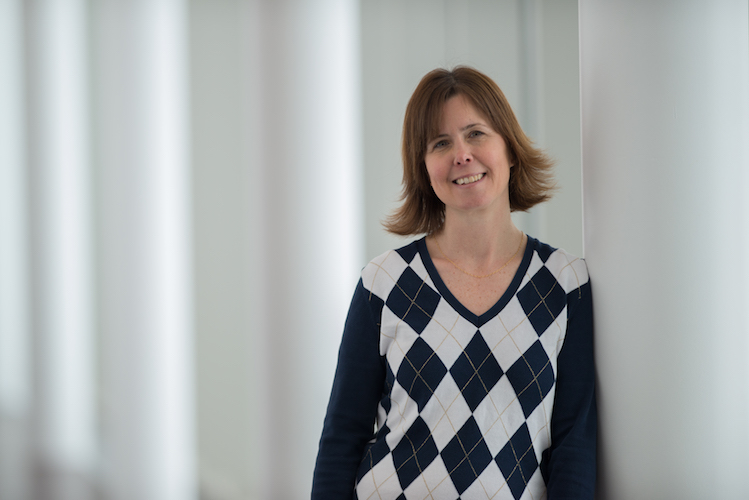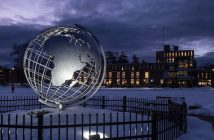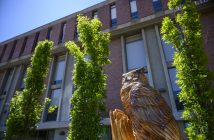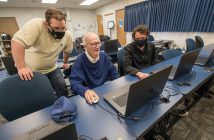New science building offers broad-scope learning, from ecology to nursing.
Walk into the new Science and Innovation Center, and you might think you’re at a cutting-edge research institution, which makes Jennifer Hanselman, Ph.D., chair of the Biology Department, proud. “Westfield State’s biology program should be on the map,” she says.
The 54,000-square-foot center is the first new academic building on campus in over 40 years. It offers laboratory and classroom space designed for the departments of Biology, Environmental Sciences, Nursing and Allied Health, and Chemical and Physical Sciences.
The biology floor features six new laboratory spaces, including an ecology teaching lab for plant studies, a cell biology lab for genetics studies, and, perhaps most importantly, two lab spaces dedicated for student and faculty research.
The new labs are all connected with preparation rooms in between and have designated areas for students to work on homework while overseeing and completing their research. Other updates include the addition of biological safety cabinets, which protect the users and cells against contamination. According to Dr. Hanselman, the areas are designed similar to the research labs that students will use in graduate school or in the workforce.
The new building also houses an Environmental Science lab, the first of its kind on campus. The new space is organized to be versatile, with movable benches and stools that can be rearranged, particularly for group work, which is essential for the department, according to Michael Vorwerk, Ph.D., Chair. Students in the wildlife management minor within the department especially benefit from the new space, which offers equipment for them to perform necropsies on animals to determine the cause of death, and a walk-in freezer to preserve specimens. The lab also includes equipment for source tracking, which allows students to conduct research to track down polluters in the Westfield River watershed.
As part of the Wilson Hall renovation, there is now an Environmental Sciences office suite that also houses faculty from other science departments whose areas of study overlap, allowing for future collaboration. “This interplay of different faculty gives us a rich tapestry of expertise and interests to address environmental and ecological issues,” Dr. Vorwerk says.
The Chemical and Physical Sciences Department was able to replace a dated a Fourier Transform Infrared spectrometer with new model and purchase a new Fast Protein Liquid Chromatograph. However, Department Chair Christopher Masi, Ph.D., said the biggest benefit to the new science center is the space itself. “The creation of a space dedicated for research means that we don’t have to carve out time and space in the teaching labs,” Dr. Masi says.
The Nursing and Allied Health Department space offers a simulation lab with a nurse’s station, medication room, hospital suite, health assessment room with examination tables, obstetric room with a baby warmer, pediatrics and adolescent room, and critical care room with a ventilator. With the new lab comes new equipment, including high-fidelity manikins and a state-of-the- art audiovisual system.
Perhaps the most beneficial aspect of the new technology offered to students is that the simulation lab is onsite, allowing students fast, direct access to practice and perfect techniques that will be crucial in their future careers. “Simulation allows for a creative learning environment that resembles real world,” Marcia Scanlon, D.N.P, Chair, says. “Students are able to practice in a nonthreatening environment and develop the skills and critical thinking needed in a fast-paced, high-technology profession.”
